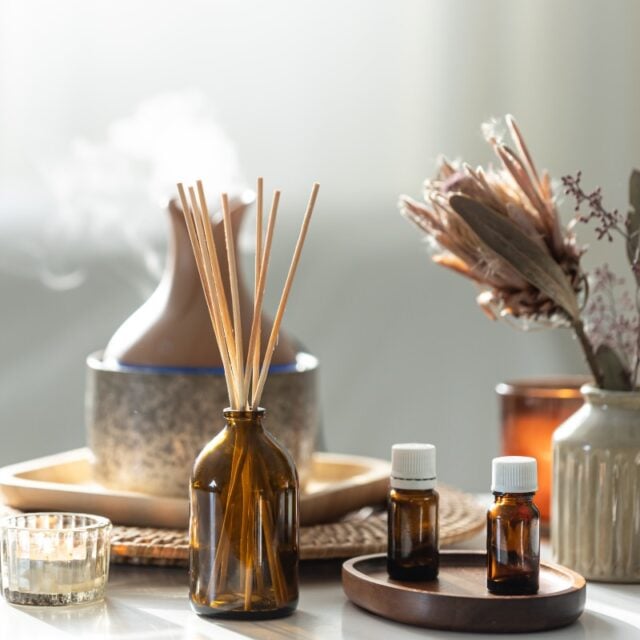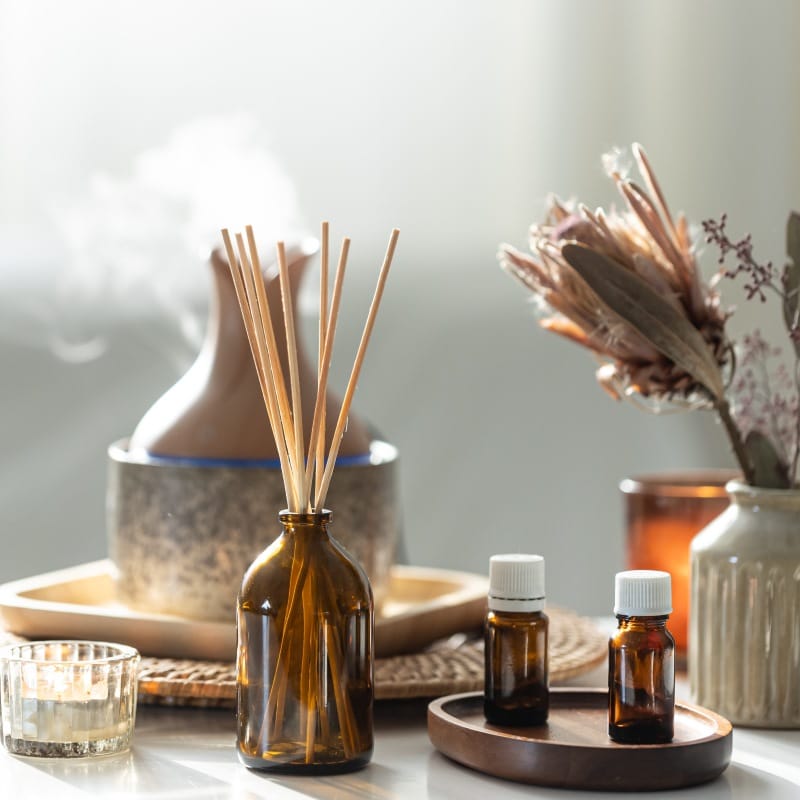
The short answer is that most aromatherapy product regulations are not treated as cosmetics. Instead, they are controlled by the General Product Safety Regulation (GPSR), which ensures that all consumer goods sold in the EU are safe for use as intended. However, depending on what a product claims, its composition, and its intended purpose, it may also be subject to cosmetic, medicinal, or biocidal laws. To make sure your product is safe, legal, and can be sold, you need to know where it fits in.
We’ll talk about how the EU sorts aromatherapy products, when they might be considered cosmetics (like massage or scented body oils), and when they are still under GPSR in this blog. We’ll also talk about how the claims and formulations on aromatherapy products can make them fall into the categories of medicine or biocide, and why brands that think “natural means safe” when they enter the EU market can make a big mistake.
Legal Framework for Aromatherapy Products in the EU
The EU classifies products based on their intended use, not on the type of ingredient or market segment. This means that two aromatherapy blends with similar ingredients can be subject to different rules based on what they say and how they are marketed to consumers.
Regulation (EC) No. 1223/2009 says that a cosmetic product is any substance or mixture that is meant to be put on the outside of the body to clean, perfume, change the way it looks, or protect the skin. A cosmetic is something that is mainly used for its looks. On the other hand, aromatherapy products that are only meant to affect the senses or emotions, such as those that help you relax, lift your mood, or make a space feel calm, don’t fit the definition of a cosmetic. Instead, the general product safety regulation treats these products as regular consumer goods.
General Product Safety Regulation (GPSR) and Its Scope
The general product safety regulation applies to all consumer goods that don’t fall under a specific set of rules. As long as they are safe for normal use, GPSR says that aromatherapy products like diffusers, air sprays, and inhalation blends can be sold freely in the EU. There is no required pre-market authorization or cosmetic notification, but it is up to the manufacturers to make sure their products are safe by doing internal risk assessments, keeping records of their suppliers, and putting the right labels on their products.
This flexibility lets wellness brands market their goods well while still keeping customers safe and following the rules.
When Aromatherapy Products Can Be Cosmetics
Some aromatherapy items can indeed fall within aromatherapy product regulation EU as cosmetics, particularly those that are applied directly to the skin and intended to improve its condition or appearance.
Examples: Massage and Body Oils
Essential oil-based massage oils and scented body blends often fall somewhere between cosmetics and wellness. When products are sold with claims like “softens the skin,” “hydrates,” or “enhances natural glow,” their purpose is to make you look better. In that case, they are cosmetics and must follow Regulation (EC) No. 1223/2009
This classification requires preparation of a Cosmetic Product Safety Report essential oils, which evaluates ingredient safety, exposure levels, and potential sensitization risks. Essential oils used in these formulations must be carefully assessed, as even natural ingredients can trigger irritation or allergic responses at high concentrations.
Obligations for Cosmetic Classification
If an aromatherapy massage oil qualifies as a cosmetic, the brand must:
- Conduct a CPSR (Cosmetic Product Safety Report) by a qualified assessor.
- Maintain a Product Information File (PIF) containing formula, manufacturing process, and labeling proof.
- Submit the product to the Cosmetic Products Notification Portal (CPNP) before market launch.
- Ensure compliance with Annex II and Annex III ingredient restrictions under the essential oil regulation EU framework.
- Follow labeling rules (ingredient list, batch code, precautions, and responsible person details).
These steps confirm that the product meets EU cosmetic safety and transparency standards before reaching consumers.
Most Aromatherapy Products Fall Under the GPSR
The general product safety regulation is still the best legal framework for most aromatherapy blends, sprays, and diffusers. These products are meant to change your mood or the mood of a room, not to change how your body looks or make you look better.
Some common examples are:
- Diffuser oils that are sold as having “calming” or “energizing” effects.
- Pillow mists and room sprays that are supposed to “improve sleep quality.”
- Inhalation blends that help you focus, feel good, or relax.
GPSR says that these things are not cosmetics; they are consumer goods. Under REACH and CLP, manufacturers must make sure their products are safe to use, include the right warnings like “for external use only,” and follow basic chemical safety rules. It’s also very important to package things correctly. Aromatherapy oils should be kept in containers that keep them from being eaten, leaking, or being exposed to light and heat. Essential oils do not need a cosmetic product safety report, but doing internal safety reviews and keeping supplier data up to date shows that you are doing your due diligence.
Crossing Regulatory Boundaries: Medicinal or Biocidal Claims
The EU also knows that some aromatherapy products may make claims that go beyond health and wellness to include therapeutic or functional claims. They leave the GPSR framework completely when that happens.
Directive 2001/83/EC says that if a product says it can help with headaches, anxiety, or insomnia, it is a medicinal product and must go through a lot of testing and get permission before it can be sold. The same goes for sprays that say they will keep bugs away or kill bacteria. These are also covered by the Biocidal Products Regulation (EU) No. 528/2012.
These frameworks are much stricter than GPSR or cosmetic law. They require studies to show that a drug works in the clinic and approval of the active ingredients. So, brands need to be very careful with the words they use in their ads. Just adding a word like “anti-stress” or “antiseptic” can change the whole legal category of a product. Consulting experts familiar with aromatherapy product EU regulation is the best way to determine which framework applies and to avoid unintentional misclassification.
Best Practices for Safety and Compliance
The following best practices will help you follow the law and gain the trust of your customers, whether your aromatherapy products are covered by general product safety laws or cosmetic laws:
- Check the safety of the ingredients by getting Safety Data Sheets (SDS) and toxicological profiles for all the essential oils.
- Control Concentrations: For allergens like linalool, eugenol, and citral, follow IFRA or similar rules.
- Use the right labels. Include hazard symbols when needed, and warnings for consumers like “Avoid contact with eyes” or “Do not eat.”
- Test and Document: Keep records of stability tests, patch tests (for cosmetics), and quality guarantees from suppliers.
- Don’t Use Words That Are Not Clear: Words like “therapeutic,” “healing,” or “antibacterial” suggest that the product has medicinal or biocidal effects, so you shouldn’t use them unless your product meets those standards.
By adopting these practices, aromatherapy brands can confidently demonstrate compliance under aromatherapy product EU regulation while keeping consumer safety at the forefront.
Frequently Asked Questions (FAQ)
Q1. Are aromatherapy products regulated as cosmetics?
No. Most aromatherapy products are not cosmetics; they are general consumer goods under the general product safety regulation, unless they beautify or perfume the skin.
Q2. When does an aromatherapy oil qualify as a cosmetic?
If it’s applied to the skin with claims like moisturizing or perfuming, it becomes a cosmetic and requires a Cosmetic Product Safety Report essential oils and PIF documentation.
Q3. Do essential oils require pre-market registration?
Not individually. However, essential oils must comply with ingredient restrictions and labeling rules under essential oil regulation EU and chemical safety frameworks.
Q4. What happens if I make a medicinal or biocidal claim?
Your product will fall under pharmaceutical or biocidal legislation, requiring authorization and efficacy proof before market entry.
Q5. How can I determine which regulation applies?
Assess your product’s claims, composition, and intended use. If in doubt, consult regulatory experts to avoid misclassification and penalties.
Conclusion
In the end, the European Union does not treat most aromatherapy products as cosmetics. Instead, they are covered by the general product safety rule, which lets them be sold as wellness or sensory products as long as they are safe to use. Massage oils and other products that claim to beautify or perfume the skin are considered cosmetics and must meet all cosmetic requirements. This includes a Cosmetic Product Safety Report and a complete Product Information File.
The most important thing to remember is that classification depends on the intended use and claims, not the natural source of the ingredients. Essential oils that come from plants can be dangerous if they aren’t tested and made correctly. If your brand sells aromatherapy products and you’re not sure if they are covered by cosmetic law or GPSR, the best thing to do is get help from an expert. Certified Cosmetics can help you figure out what kind of product you have, how safe it is, and how to follow all the rules for aromatherapy and essential oil-based products.

